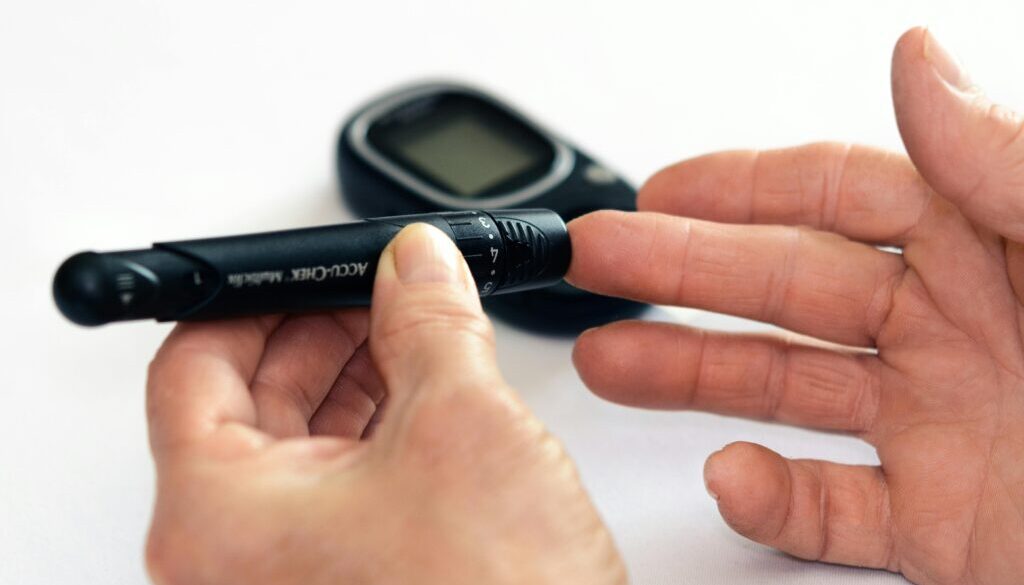Understanding Blood Sugar: A Comprehensive Guide On Normal Blood Sugar Range
Table of Contents
- Introduction to Blood Sugar Test
- Purpose and Synonyms of Blood Sugar Test
- How the Test Works
- Types of Blood Sugar Tests
- Why Get a Blood Sugar Test?
- Understanding Test Results
- Other Potential Causes of Abnormal Blood Sugar Levels
- Diagnosis Methods
- Treatment Methods
- Other Indicators of Trouble
- Understanding Blood Sugar
- Comprehensive Management Strategies
- FAQs about Blood Sugar Levels
- Conclusion
Introduction to Blood Sugar Test
What is a Blood Sugar Test?
A blood sugar test, also known as a blood glucose test, measures the amount of sugar (glucose) present in your bloodstream. Glucose is the primary source of energy for your body’s cells, and it comes from the carbohydrates you consume. This test is critical for diagnosing and managing diabetes, as well as monitoring blood sugar levels in individuals at risk for diabetes.
Why is it Important to Measure Blood Sugar?
Measuring blood sugar is crucial because glucose levels can indicate various health conditions, primarily diabetes. Regular monitoring helps in:
- Diagnosing diabetes
- Managing existing diabetes
- Preventing complications from high or low blood sugar levels
- Screening for diabetes risk in individuals with certain health conditions or risk factors
Purpose and Synonyms of Blood Sugar Test
Synonyms
The blood sugar test is also known by several other names:
- Random blood sugar
- Blood sugar level
- Fasting blood sugar
- Glucose test
- Diabetic screening – blood sugar test
- Diabetes – blood sugar test
Purpose
The primary purpose of the blood sugar test is to measure the amount of glucose in a blood sample. This test is essential for:
- Diagnosing Diabetes: It helps determine if a person has diabetes or prediabetes.
- Monitoring Existing Diabetes: People with diabetes need to monitor their blood sugar levels regularly to manage their condition effectively.
- Screening for Diabetes Risk Factors: Regular blood sugar tests can help identify individuals at risk for diabetes, especially those with high blood pressure, a family history of diabetes, or obesity.
How the Test Works
Source of Glucose
Glucose, the sugar measured in this test, comes from the carbohydrates consumed in your diet. Foods like bread, rice, fruits, and sweets are primary sources of carbohydrates, which the body converts into glucose for energy.
Sample Location
The blood sample for a blood sugar test is usually taken from a vein. The common sites for venipuncture are the inside of the elbow or the back of the hand. The sample is then analyzed to determine the glucose level.
Hormone Involved
Insulin is the primary hormone involved in regulating blood sugar levels. Produced by the pancreas, insulin helps cells absorb glucose from the blood. When the body doesn’t produce enough insulin or becomes resistant to it, glucose levels in the blood rise, leading to conditions like diabetes.
Types of Blood Sugar Tests
Fasting Blood Sugar Test
The fasting blood sugar test measures blood glucose after fasting (not eating or drinking anything except water) for at least 8 hours. It’s usually done in the morning before breakfast.
Random Blood Sugar Test
The random blood sugar test can be done at any time, regardless of when you last ate. This test is useful for quickly checking blood sugar levels.
Postprandial Blood Sugar Test
The postprandial blood sugar test is conducted two hours after consuming a specific amount of glucose or a meal. This test helps understand how well your body processes sugar.
Sensation during Test
During a blood sugar test, individuals might feel a moderate pain or a slight prick when the needle is inserted to draw blood. Some may experience throbbing or bruising afterward. The discomfort is usually minimal and temporary.
Why Get a Blood Sugar Test?
Signs of Diabetes
A blood sugar test is performed to detect signs of diabetes, such as:
- Increased urination
- Sudden weight gain
- Blurred vision
- Confusion
- Fainting
- Seizures
- Unconsciousness
- Coma
Monitoring Existing Diabetes
For individuals already diagnosed with diabetes, regular blood sugar tests are essential to monitor and manage their condition effectively. Consistent monitoring helps prevent complications such as nerve damage, kidney issues, and cardiovascular problems.
Screening
Blood sugar tests are also used for diabetes screening, especially in individuals with risk factors such as:
- High blood sugar levels: Persistent high glucose levels indicate a risk of diabetes.
- High blood pressure: Hypertension is often associated with diabetes.
- Heart disease history: A history of heart disease can increase the risk of developing diabetes.
- Family history of diabetes: Genetics play a role in diabetes risk.
- Obesity: Excess body weight is a significant risk factor for diabetes.
Understanding Test Results
Normal Results
- Fasting Blood Glucose Test: The normal range is 70-99 mg/dL.
- Random Blood Glucose Test: Typically, 125 mg/dL or lower is considered normal.
Abnormal Results
- Fasting Blood Glucose: Levels between 100-125 mg/dL indicate impaired fasting glucose, a prediabetic state. Levels of 126 mg/dL or higher usually indicate diabetes.
- Random Blood Glucose: Levels of 200 mg/dL or higher likely indicate diabetes.
Risks
The risks associated with the blood sugar test are minimal but can include:
- Bleeding: Slight bleeding may occur at the puncture site.
- Fainting: Some people may feel lightheaded or faint.
- Bruising: Minor bruising might occur around the puncture site.
- Infection: Rarely, infection can occur at the site where blood was drawn.
Other Potential Causes of Abnormal Blood Sugar Levels
Various medical conditions and factors can lead to abnormal blood sugar levels, including:
- Overactive thyroid: Hyperthyroidism can affect glucose metabolism.
- Pancreatic issues: Conditions like pancreatitis can impact insulin production.
- Stress: Chronic stress can elevate blood sugar levels.
- Tumors: Certain tumors can influence hormone levels and glucose metabolism.
- Thyroid or adrenal gland issues: Disorders in these glands can affect blood sugar levels.
- Insulin issues: Problems with insulin production or function can lead to abnormal glucose levels.
- Liver or kidney disease: These organs play a role in glucose metabolism and regulation.
- Weight loss: Significant weight loss can affect blood sugar levels.
- Vigorous exercise: Intense physical activity can temporarily alter blood sugar levels.
Diagnosis Methods
Common Tests for Blood Sugar Levels
- A1C Test: Measures average blood sugar levels over the past three months. It’s a key test for diagnosing and monitoring diabetes.
- Random Blood Sugar Test: Measures blood glucose levels at any random time.
- Fasting Blood Sugar Test: Measures blood glucose levels after an overnight fast.
- Glucose Tolerance Test: Measures blood sugar levels before and after consuming a glucose-rich drink to assess how well the body processes glucose.
- Urine Test for Ketones: Checks for ketones in the urine, which indicates the body is using fat for energy instead of glucose.
- Autoantibodies Test: Detects antibodies that attack insulin-producing cells, useful in diagnosing type 1 diabetes.
- Gestational Diabetes Screening: Assesses blood sugar levels in pregnant women to screen for gestational diabetes.
- Oral Glucose Tolerance Test: Used primarily in pregnancy to screen for gestational diabetes.
- Regular Blood Sugar Monitoring: Essential for managing diabetes and involves regular blood sugar checks using a glucometer.
- Continuous Glucose Monitor: A device that tracks blood sugar levels throughout the day and night.
Treatment Methods
Blood Sugar Management
- Blood Sugar Monitoring: Regularly checking blood sugar levels helps in managing diabetes effectively.
- Insulin: Administering insulin helps regulate blood sugar levels in people with diabetes who do not produce enough insulin naturally.
- Oral Drugs: Medications such as metformin help manage blood sugar levels by improving insulin sensitivity or reducing glucose production in the liver.
- Pancreas Transplant: In some cases, a pancreas transplant may be considered to restore normal insulin production.
- Islet Cell Transplant: Transplanting insulin-producing cells from a donor pancreas can help manage blood sugar levels.
- Bariatric Surgery: Weight loss surgery can improve blood sugar control in obese individuals with type 2 diabetes.
Lifestyle Changes
- Healthy Eating: Consuming a balanced diet with a focus on low-glycemic index foods can help manage blood sugar levels. Include fiber-rich foods, lean proteins, and healthy fats in your diet.
- Physical Activity: Engaging in regular physical activity helps regulate blood sugar levels and improves overall health. Aim for at least 30 minutes of moderate exercise most days of the week.
- Carbohydrate Counting: Managing carbohydrate intake can help control blood sugar levels. Keeping track of carbs helps in planning meals and snacks effectively.
Other Indicators of Trouble
High Blood Sugar (Hyperglycemia)
Hyperglycemia occurs when blood sugar levels are too high, often above 180 mg/dL. This condition can lead to serious health complications if not managed properly, including:
- Diabetic Ketoacidosis (DKA): A severe condition where high blood sugar and ketones lead to acidity in the blood.
- Hyperglycemic Hyperosmolar Nonketotic Syndrome (HHNS): A severe complication of diabetes characterized by very high blood sugar levels without the presence of ketones.
Increased Ketones in Urine
High levels of ketones in the urine can indicate that the body is using fat instead of glucose for energy, a sign of insufficient insulin.
Understanding Blood Sugar
What Is Blood Sugar?
Blood sugar, or glucose, is the main type of sugar found in the blood. It comes from the food we eat and is the body’s primary source of energy. Glucose levels fluctuate throughout the day based on food intake, physical activity, and other factors.
What Are Normal Blood Sugar Levels?
Normal blood sugar levels vary depending on the type of test:
- Fasting Blood Sugar Test: 70-99 mg/dL is considered normal.
- Random Blood Sugar Test: 125 mg/dL or lower is considered normal.
Symptoms of High Blood Sugar
Symptoms of high blood sugar include:
- Increased thirst
- Frequent urination
- Fatigue
- Blurred vision
- Headaches
Causes of High Blood Sugar
High blood sugar can be caused by various factors, including:
- Insufficient Insulin Production: The body does not produce enough insulin.
- Poor Dietary Choices: Consuming high amounts of sugar and refined carbs.
- Lack of Physical Activity: Sedentary lifestyle can lead to high blood sugar.
- Stress: Chronic stress can elevate blood sugar levels.
- Illness: Certain illnesses can affect blood sugar levels.
- Certain Medications: Some medications can raise blood sugar levels.
Comprehensive Management Strategies
Diet and Nutrition
Eating a balanced diet with a focus on low-glycemic index foods can help manage blood sugar levels. Incorporate:
- Fiber-Rich Foods: Whole grains, vegetables, and fruits.
- Lean Proteins: Fish, chicken, and legumes.
- Healthy Fats: Avocado, nuts, and olive oil.
Regular Physical Activity
Engaging in regular physical activity helps regulate blood sugar levels and improves overall health. Aim for:
- Moderate Exercise: At least 30 minutes most days of the week.
- Strength Training: Building muscle helps improve insulin sensitivity.
Stress Management
Chronic stress can elevate blood sugar levels. Practices such as mindfulness, yoga, and adequate sleep can help manage stress effectively.
Medication Adherence
For those prescribed medication, adhering to the prescribed regimen is crucial for maintaining blood sugar control. Medications may include:
- Insulin: For type 1 diabetes or advanced type 2 diabetes.
- Oral Hypoglycemics: For managing type 2 diabetes.
FAQs about Blood Sugar Levels
What is Hypoglycemia?
Hypoglycemia occurs when blood sugar levels drop below normal, typically less than 70 mg/dL. Symptoms include:
- Shakiness
- Sweating
- Confusion
- Dizziness
How Often Should I Test My Blood Sugar?
The frequency of blood sugar testing depends on individual health needs and should be determined by a healthcare provider. People with diabetes may need to test multiple times a day.
Can Lifestyle Changes Alone Manage Blood Sugar?
In some cases, lifestyle changes such as diet, exercise, and weight management can effectively control blood sugar levels. However, medication may be necessary for others.
What Foods Should I Avoid to Maintain Normal Blood Sugar?
Avoid foods high in refined sugars, processed foods, and those with high glycemic indexes. Focus on whole grains, vegetables, and lean proteins.
Conclusion
Understanding the normal blood sugar range and the implications of abnormal levels is crucial for maintaining overall health and managing conditions like diabetes. Regular monitoring, adopting a healthy lifestyle, and adhering to medical advice can help keep blood sugar levels within the normal range and prevent complications. This comprehensive guide provides a thorough understanding of blood sugar tests, results, and management strategies, empowering you to take control of your health.





10 July 2024 @ 21:22
I like this site it’s a master piece! Glad I discovered it.